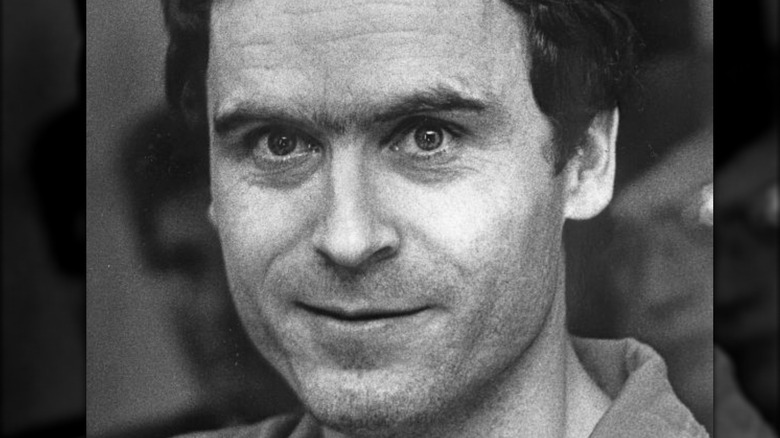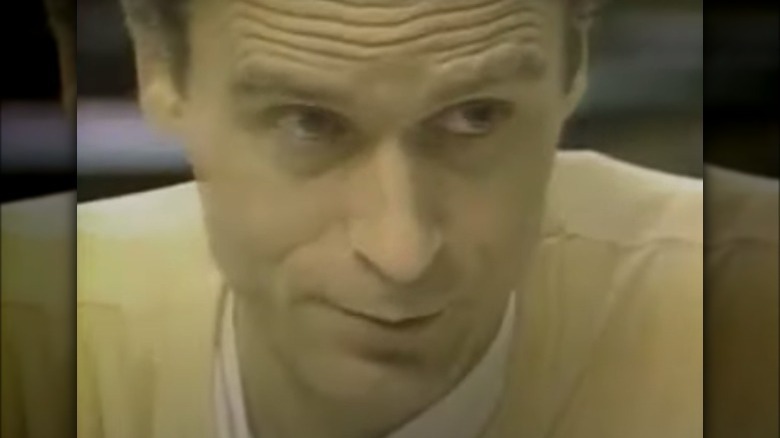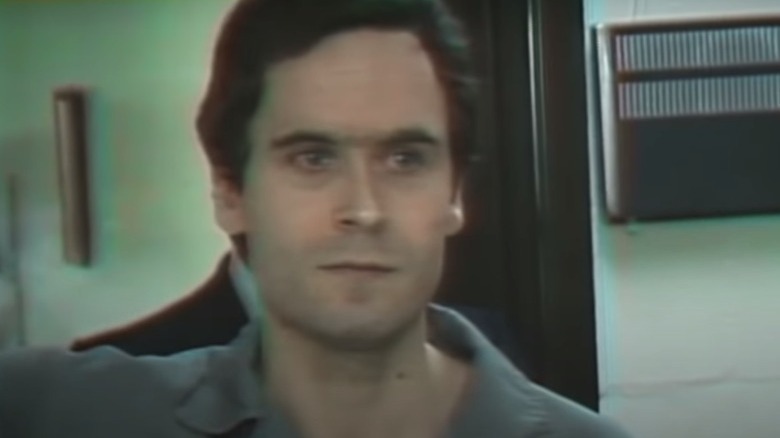Why Experts Feel Ted Bundy's First Girlfriend Influenced How He Chose His Victims
Diane Edwards had the qualities that would have attracted many suitors. The brunette's long, straight hair framed a flawless square face, beset by dark and gentle eyes. She came from good stock, the daughter of affluent parents who hailed from Burlingame, California, a small city that sits on San Francisco Bay. She had plenty of drive and ambition and was preparing to graduate from the University of Washington when she met a man one year her junior, Theodore Bundy (per "The Stranger Beside Me" by Ann Rule, via Oxygen).
Bundy was a handful of years from becoming one of the most wicked serial killers in history. Though he might have been exhibiting some disturbing character flaws while a college student, Edwards was somewhat taken in by him. After she graduated in 1968, she moved to San Francisco to begin her career. The couple remained together for a time. The long-distance eventually took its toll, as did Edwards' concern that she and Bundy didn't share the same level of motivation. After a year and a half of being together, Edwards broke it off. This devastated Bundy.
In the Netflix documentary series "Conversations with a Killer: The Ted Bundy Tapes" (the trailer is on YouTube), Bundy recalls how the split from Edwards impacted him. "I had this overwhelming feeling of rejection," he admitted. It wasn't long after that he began to plan revenge for getting jilted.
Revenge on Edwards
The breakup gave Bundy an ambition that he never felt before. He says in "Conversations with a Killer: The Ted Bundy Tapes" that Edwards "inspired me to look at myself and become something more" (via Oxygen). Bundy had dropped out of college not long before the two had split up. Perhaps more determined to make something of himself, he re-enrolled and declared a psychology major. Bundy became obsessed with social status, prompting his involvement in politics. He began working for the Governor of Washington, Republican Daniel J. Evans. Work with the political party followed, exposing Bundy to social gatherings and events attended by influential people (per Oxygen). Bundy even entered a serious relationship with a woman he met in 1969, Elizabeth Kloepfer (also via Oxygen). This was a long-term romance, lasting until after his eventual incarceration (per Refinery 29).
But Bundy had not forgotten about Edwards, and he had beefed up his resume and his confidence since their 1968 breakup. Unbeknownst to Kloepfer, he contacted Edwards in 1973 and was able to rekindle an old flame. She was impressed by his newly found sense of upward mobility, particularly with his work in politics. A long-distance relationship developed again, with Edwards believing the two would eventually wed. In late 1973, Bundy gave her the cold shoulder during her stay with him. Afterward, her letters went without replies. In February 1974, she called him out of frustration, only to have him hang up on her.
Bundy had a long game for revenge on Edwards. But experts maintain that this wasn't enough to quench his thirst.
Bundy begins his murderous rampage
Approximately one month before he ghosted Edwards, Bundy assaulted his first known victim. She was 18-year-old college student Karen Sparks, whom Bundy sexually assaulted and viciously beat. She survived her serious injuries after being hospitalized (via Entertainment Tonight). Bundy's first known kill happened in February 1974 when he violated and murdered 21-year-old Lynda Ann Healy (per History 101). In March, 19-year-old Donna Gail Manson was abducted by Bundy, becoming murder victim #2 (per Wicked Horror). In April, another college student, 18-year-old Susan Rancourt, was discovered missing, another Bundy victim.
After his arrest several years later, it became clear that most of the 30 known murder victims, as well as those lucky enough to survive his brutality, fit a common description. They were young, caucasian females, mostly college-aged. Looking at their photos, there were some other similarities. Most had long, brown hair that was parted in the middle. The Mirror reports that criminologist Christopher Berry-Dee remarked of these women that "If you were to put all his victims lined up together you would think they were all sisters."
That Bundy was going after a certain profile wasn't just a coincidence, nor was it presumptive that he was killing them in part due to his initial rejection by Edwards. In his own words, Bundy revealed that he "had this overwhelming fear of rejection that stemmed, not just from her, but everything. In there, somewhere was a desire to have some sort of revenge on Diane" (per "Conversations with a Killer: The Ted Bundy Tapes," via The Mirror).


